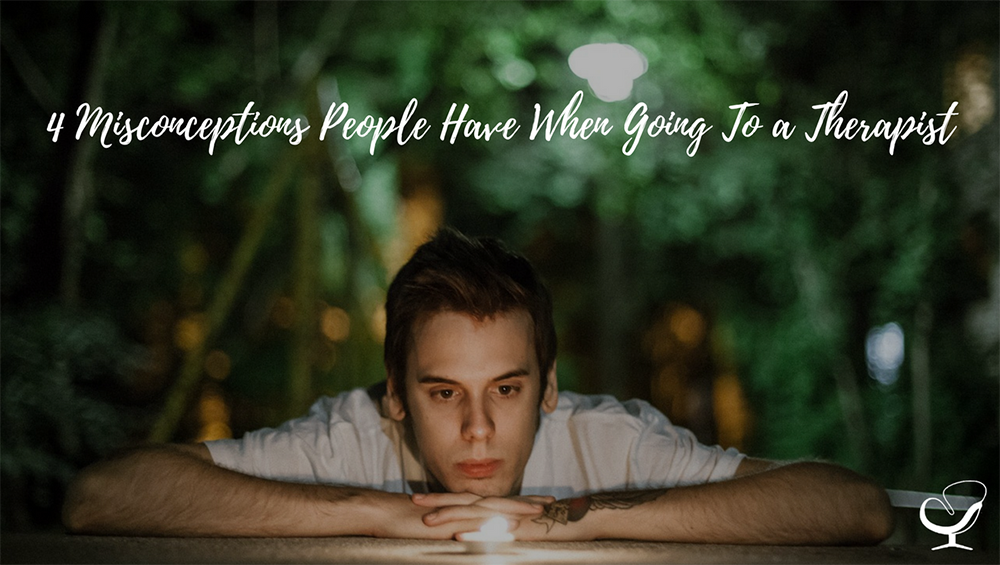The majority of people in our society have several misconceptions about therapy and the benefits that it can offer. These can potentially lead to people not seeking the help that they need, when it could otherwise be very accessible. Common excuses can range from thinking that only crazy people go to therapy, that they can do it on their own, it is too expensive, and that they are scared.
The following are the most common myths that people believe about therapy, and some ways that practitioners can convince potential clients that therapy is worth the effort.
1. Only Crazy People Need To See a Therapist
It is important to educate the public that people can go to therapy for any reason. These include depression or anxiety, drug or alcohol use, help getting through a divorce or a death, or even to become a better problem solver.
Potential clients need to be shown that getting help is a sign of strength, not weakness, and that it is good to take care of mental health.
2. I Can Manage
Many people have the misconception that talking to their friends and family will be just as effective as talking to a therapist. What they do not realize is that psychologists have, not only the unbiased third-party opinion, but also the education to help pinpoint problems or patterns that friends and family may not have noticed.
According to the American Psychological Association, it is not always possible to get better by just trying hard to keep a positive attitude. This is because, sometimes, there is a biological component that is causing the problem.
Practitioners can rule certain possibilities out by having the client take assessments like an ADHD test or something similar to this schizophrenia quiz. This has the potential to show clients that there is a real benefit to going to see a professional. That they can receive real answers and get onto a real path to being healthy.
3. Therapy Is Too Expensive
Prices to see a psychologist can range from free at universities and some community centers, to several hundred dollars per hour. If you cannot afford the high price of therapy, there are a couple of other available options.
Compare it to the value of other things that people spend money on throughout the year to make them feel good, such as cars and vacations. Focusing on mental health could put some things within reach that would be hard-pressed to obtain without it. Lower rates may give access to much needed help to some that may otherwise not be able to get it. They may also help clients to be able to afford to keep coming.
4. People Are Scared
Many people who would benefit from therapy the most are scared to start. Some are scared that the therapist will confirm their worst fears that there is something wrong with them; that they are crazy.
Others are afraid that therapy will make them worse. They believe that they will have to relive whatever bad thing happened to them, and will come out of it even more messed up. To ensure that the clients keep returning, and potential clients show up in the first place, the practitioner has to make an effort to convince them that they will not leave more damaged than when they arrived.
It is normal for people to hold on to intense feelings and the clients have to realize that tending to their mental health and feelings are the only ways to get better. And, that is what a good therapist can provide.
There are people who have successfully gone to therapy and speak openly about it…
Not Even Hollywood Is Immune
Gwyneth Paltrow suffered from postpartum depression. This is something that many people face and feel like they can’t talk about. But, the hardest part is acknowledging that there is a problem and deciding to seek help.
Catherine Zeta-Jones has gone to therapy for treatment of Bipolar Disorder and believes that if she can encourage just one person to seek the help they need, then speaking out was worth it.
J. K. Rowling, one of the most successful authors in the world, battled clinical depression while writing the Harry Potter books. She claims that therapy helped her deal with her rise to fame and continues to encourage others not to be afraid of it.
While the gap is getting smaller, there is a general disconnect between the number of people who need to seek the help of a therapist and those who actually do.
Educating the public about their misconceptions that therapy is a bad thing and showing them the many benefits of going to therapy are the first steps in getting help for those who are in need, but afraid to seek it. Here’s some good advice on how to keep more of these clients: pay attention to why people tend to avoid therapy in the first place.
 Mike Jones enjoys writing about mental health. He hopes society will understand that going to a therapist isn’t a sign of weakness, but of strength. Mike advocates for seeking professional help and stopping the stereotypes surrounding mental illness. More of Mike’s work can be found on Twitter, @mike_jones35.
Mike Jones enjoys writing about mental health. He hopes society will understand that going to a therapist isn’t a sign of weakness, but of strength. Mike advocates for seeking professional help and stopping the stereotypes surrounding mental illness. More of Mike’s work can be found on Twitter, @mike_jones35.

